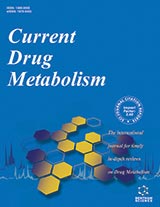Abstract
Ultrasound guided central venous cannulation is rapidly becoming the standard technique for achieving a central line in neonates, infants and children. Older techniques such as surgical cutdown and ‘blind’ percutaneous venipuncture have many disadvantages: they are time consuming, vein consuming and/or associated with dangerous immediate or late complications. On the other hand, ultrasound has only advantages, giving the operator the possibility of (a) choosing the most appropriate and safest venous access on the basis of ultrasound assessment, (b) performing a 100% safe insertion, (c) ruling out malpositions or pleuro-pulmonary damages, during and after the procedure. Ultrasound guided central venous cannulation has been described in many clinical studies of the last decade, each one showing the higher efficacy and safety of ultrasound guidance in children when compared to the traditional landmark method. Ultrasound can be used for puncturing many different deep veins of the arm, neck, groin and thorax. The vein can be visualized either in short axis or in long axis, while the puncture can be performed ‘in-plane’ (when the needle trajectory is included in the plane of the ultrasound probe) or ‘out-of-plane’ (when the needle trajectory is not in that plane). Though, the best clinical results of ultrasound guidance can be achieved - particularly in neonates and infants - only if the operator has been properly trained in this technique through an appropriate curriculum that should include theory lessons, simulation practice and a tutored learning curve.
Keywords: Central venous access, central venous catheters, PICC, ultrasound guidance, venipuncture, neonates, ultrasound, Central lines, short axis, long axis
Current Drug Targets
Title:Ultrasound Guided Central Vascular Access in Neonates, Infants and Children
Volume: 13 Issue: 7
Author(s): Mauro Pittiruti
Affiliation:
Keywords: Central venous access, central venous catheters, PICC, ultrasound guidance, venipuncture, neonates, ultrasound, Central lines, short axis, long axis
Abstract: Ultrasound guided central venous cannulation is rapidly becoming the standard technique for achieving a central line in neonates, infants and children. Older techniques such as surgical cutdown and ‘blind’ percutaneous venipuncture have many disadvantages: they are time consuming, vein consuming and/or associated with dangerous immediate or late complications. On the other hand, ultrasound has only advantages, giving the operator the possibility of (a) choosing the most appropriate and safest venous access on the basis of ultrasound assessment, (b) performing a 100% safe insertion, (c) ruling out malpositions or pleuro-pulmonary damages, during and after the procedure. Ultrasound guided central venous cannulation has been described in many clinical studies of the last decade, each one showing the higher efficacy and safety of ultrasound guidance in children when compared to the traditional landmark method. Ultrasound can be used for puncturing many different deep veins of the arm, neck, groin and thorax. The vein can be visualized either in short axis or in long axis, while the puncture can be performed ‘in-plane’ (when the needle trajectory is included in the plane of the ultrasound probe) or ‘out-of-plane’ (when the needle trajectory is not in that plane). Though, the best clinical results of ultrasound guidance can be achieved - particularly in neonates and infants - only if the operator has been properly trained in this technique through an appropriate curriculum that should include theory lessons, simulation practice and a tutored learning curve.
Export Options
About this article
Cite this article as:
Pittiruti Mauro, Ultrasound Guided Central Vascular Access in Neonates, Infants and Children, Current Drug Targets 2012; 13 (7) . https://dx.doi.org/10.2174/138945012800675696
| DOI https://dx.doi.org/10.2174/138945012800675696 |
Print ISSN 1389-4501 |
| Publisher Name Bentham Science Publisher |
Online ISSN 1873-5592 |
Related Books
 37
37
- Author Guidelines
- Bentham Author Support Services (BASS)
- Graphical Abstracts
- Fabricating and Stating False Information
- Research Misconduct
- Post Publication Discussions and Corrections
- Publishing Ethics and Rectitude
- Increase Visibility of Your Article
- Archiving Policies
- Peer Review Workflow
- Order Your Article Before Print
- Promote Your Article
- Manuscript Transfer Facility
- Editorial Policies
- Allegations from Whistleblowers
Related Articles
-
Management of Postoperative Nausea and Vomiting in Women Undergoing Major Gynecological Surgery: A Review and Update
Current Drug Therapy The Challenges of Blood Pressure Control in Dialysis Patients
Recent Advances in Cardiovascular Drug Discovery (Discontinued) Noncardiac Surgery: Evaluating and Minimizing Cardiac Risk
Current Cardiology Reviews Heart Rate as a Therapeutic Target in Angina Pectoris
Current Pharmaceutical Design Repurposing of Anti-Diabetic Agents for the Treatment of Cognitive Impairment and Mood Disorders
Current Molecular Medicine Transseptal Access to the Left Atrium: Tips and Tricks to Keep it Safe Derived from Single Operator Experience and Review of the Literature
Current Cardiology Reviews Sigma Receptors and Cocaine Abuse
Current Topics in Medicinal Chemistry Thiazoles and Thiazolidinones as Antioxidants
Current Medicinal Chemistry Editorial [Hot Topic: Calcium Regulatory Proteins as Therapeutic Targets (Guest Editor: Livia C. Hool)]
Current Drug Targets Diabetic Cardiovascular Disease – AMP-Activated Protein Kinase (AMPK) as a Therapeutic Target
Cardiovascular & Hematological Agents in Medicinal Chemistry Editorial [Hot Topic: The Adenosinergic System - From Physiology to Pathology and Therapeutics (Guest Editors: A. Rees and J. Ham)]
Immunology, Endocrine & Metabolic Agents in Medicinal Chemistry (Discontinued) Severe OSA Leading to Long Pauses in 24-h Holter ECG Reversed with CPAP
Current Cardiology Reviews Circulating Levels of Uric Acid and Risk for Metabolic Syndrome
Current Diabetes Reviews Role of Antioxidants for the Treatment of Cardiovascular Diseases: Challenges and Opportunities
Current Pharmaceutical Design Protective Effect of Natural Antioxidants on Heart Against Ischemia-Reperfusion Damage
Current Pharmaceutical Biotechnology Amiodarone-Induced SIADH: Two Cases Report
Endocrine, Metabolic & Immune Disorders - Drug Targets Limitations and Potential Clinical Application on Contrast Echocardiography
Current Cardiology Reviews Profiling the Shear Stress of Atherosclerosis; A Genomic View
Current Genomics Nano-Systems for Advanced Therapeutics and Diagnosis of Atherosclerosis
Current Pharmaceutical Design Genetic Aspects of Lone Atrial Fibrillation: What Do We Know?
Current Pharmaceutical Design


























